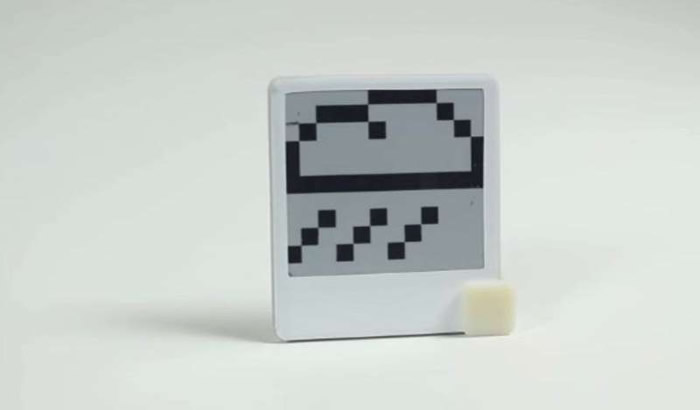Little display device runs on office lighting
Microsoft Research is up to something that could be a work productive wonder. Right now the technology is in the form of a device in prototype. The device is still in the research stage, said New Scientist.
Observers have reason to hope it develops into something commercially available at some point in the future. Reader reactions to their video were of the “I want one” and “take my money” variety.
This is a little display e-ink screen that could behave as a reader for notes and reminders; think little clock on your table. Jamie Condliffe in MIT Technology Review called it a “cute Polaroid-esque display.”
The research team presented it in detail at the User Interface Software and Technology (UIST) conference earlier this month, in the form of their paper, “Exploring the Design Space for Energy-Harvesting Situated Displays.”
The authors are from Microsoft Research, UK and the UbiComp lab, University of Washington, Seattle. According to the abstract, they presented a thin, wireless, photovoltaic-powered display capable of indefinite operation in indoor lighting conditions.
The authors wrote, “By evaluating different locations, for example on a desk or stuck to a desktop monitor, we show that the end-to-end performance of our system supports updates every 1 – 25 minutes, depending on lighting. Ultimately we hope that our work is the next step towards more ubiquitous displays throughout the environment which help users to stay productive and informed.”
That lighting part is what has attracted the attention of tech watchers. The lighting aspect of this device is such that it can run without having to worry about charging.
“Microsoft Research has developed a screen powered by ambient light alone,” said Timothy Revell in New Scientist. It is easy to position this, as did Revell, as a display running on office lighting. Office maintenance workers would likely be sweeping up less crunched up notes from the floor or wastebasket.
New Scientist quoted Grosse-Puppendahl. The device “could be reused, synchronised with notes in other locations, and could be programmed to show up-to-date information, like the weather or the latest bus timetable when you’re due to leave the office.”
The abstract said the display uses a low-resolution e-paper architecture, which is 35 times more energy-efficient than smaller-sized high-resolution displays. “Depending on the ambient lighting, the display can trigger an update every 1–25 minutes and communicate to a PC or smartphone via Bluetooth Low-Energy.”
In the bigger picture, said MIT Technology Review, there is activity in the development of devices which are able to gather their power from their surroundings.
“At this year’s EmTech MIT 2016, Shyam Gollakota, an assistant professor at the University of Washington, showed off a contact lens that’s able to connect to other devices using Wi-Fi despite not containing a power supply.” Condliffe said its secret was in an approach harnessing energy from radio signals in the air.
More information: TechXplore


Comments are closed, but trackbacks and pingbacks are open.